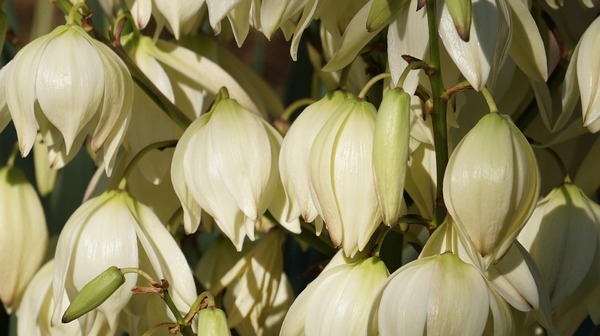Just In
- 48 min ago

- 1 hr ago

- 3 hrs ago

- 4 hrs ago

Don't Miss
- Automobiles
 How To Enjoy Your Car Music Safely Without Compromising On Road Safety
How To Enjoy Your Car Music Safely Without Compromising On Road Safety - Finance
 Mukesh Ambani Led JioCinema Slashes Premium Subscription Prices; IPL Live Stream Remains Free
Mukesh Ambani Led JioCinema Slashes Premium Subscription Prices; IPL Live Stream Remains Free - Technology
 Garena Free Fire Max Redeem Codes for April 25, 2024: Get Access to the Latest Freebies in the Game
Garena Free Fire Max Redeem Codes for April 25, 2024: Get Access to the Latest Freebies in the Game - News
 How Will Vokkaliga Voters Influence Bengaluru Rural Elections?
How Will Vokkaliga Voters Influence Bengaluru Rural Elections? - Sports
 SRH vs RCB IPL 2024: Who will be the Highest Wicket-takers in Hyderabad vs Bengaluru?
SRH vs RCB IPL 2024: Who will be the Highest Wicket-takers in Hyderabad vs Bengaluru? - Movies
 Ranneeti: Balakot & Beyond Full Series LEAKED In HD For Free Download After Its Release; DEETS -
Ranneeti: Balakot & Beyond Full Series LEAKED In HD For Free Download After Its Release; DEETS - - Education
 JEE Main Result 2024 Out, Telangana's 15 Toppers Shine, Check Statewise List of 56 Candidates with Perfect 100
JEE Main Result 2024 Out, Telangana's 15 Toppers Shine, Check Statewise List of 56 Candidates with Perfect 100 - Travel
 Escape to Kalimpong, Gangtok, and Darjeeling with IRCTC's Tour Package; Check Itinerary
Escape to Kalimpong, Gangtok, and Darjeeling with IRCTC's Tour Package; Check Itinerary
6 Fascinating Health Benefits Of Yucca: Dosage, Forms & Side Effects
Scientifically termed as Yucca filamentosa, yucca is a genus of perennial shrubs and trees belonging to the family Asparagaceae. Yucca is one amongst the 40 to 50 different species belonging to the family. The shrub is commonly mistaken with yuca or yuca root, which belongs to the genus Euphorbiaceae and has the common name of cassava [1] .

The fruits, seeds as well as the flowers of the plant, are used for consumption. Yucca is widely used for medicinal purposes and can be incorporated into your diet. Adam's needle is the most commonly used variety of yucca, due to the plethora of benefits it possesses [2] . The medicinal benefits of yucca can be attributed to the presence of saponins, resveratrol, and other phytonutrients present in the plant [3] . It can be used topically to treat skin conditions or wounds as well, and most commonly yucca is consumed in the form of a supplement.
Phytochemicals In Yucca
The plant contains various physiologically active phytochemicals such as steroidal saponins (commercially used as a saponin source). It is also a rich source of polyphenolics, including resveratrol and a number of other stilbenes such as yuccaols A, B, C, D and E [4] .
Health Benefits Of Yucca
The perennial shrub is asserted to possess the ability to stimulate circulation, improve digestion, reduce inflammation, and relieve pain. Various herbalists point out that yucca can be used in the treatment of high blood pressure, high cholesterol, migraine, diabetes, eczema, arthritis, stomach problems, skin infections, gall bladder and liver disorders [5] . Let's get to know more about the benefits provided by yucca and how it affects your body.
1. Manages arthritis pain
Various reports have pointed out that Native Americans have been using yucca for the treatment of arthritis pain and other symptoms [6] . The anti-inflammatory properties possessed by the plant help soothe and relieve the pain. Rich in compounds called phenols, yucca supplements not only reduce the inflammation but also neutralises the free radicals that cause harm to cells and tissues. Individuals suffering from osteoarthritis can exponentially benefit from yucca, thanks to its saponin and phytochemical content which help suppress the inflammatory responses in your body [7] .

2. Boots immunity
Rich in vitamin C and antioxidants, yucca is beneficial for your immune system. Along with that, it is also beneficial in improving the functioning of your immune system. It helps to protect your body against illnesses. The vitamin C content in the plant help stimulates the production of white blood cells that help the body to fight viruses and infection [8] . The antioxidants present in yucca protect your body from cell mutations and damage from free radicals.
3. Prevents heart disease
One of the major benefits of yucca is that it protects your heart by decreasing the imbalance between free radicals and antioxidants (oxidative stress) on the cardiovascular system. The free radicals can affect your heart health by accelerating various diseases such as heart diseases and cancer. By reducing the oxidative stress, yucca help reduce the excessive clumping of platelets; thereby reducing the overall risk of cardiac diseases [9] .
4. Reduces high cholesterol
Apart from improving your heart health, one other major health benefit of yucca is its ability in lowering high cholesterol levels. The plant-based chemicals steroidal saponins present in yucca upon consumption binds with the cholesterol and prevents its absorption in the intestines. This, in turn, helps reduce the cholesterol levels in the blood [10] .
5. Manages diabetes
According to a 2013 study, yucca is proven to be beneficial in regulating the metabolic disturbances in diabetic rats [11] . Although human studies are yet to be conducted, it was strongly asserted that yucca supplements are beneficial in boosting the health of diabetic individuals. It was found that yucca help regulates blood sugar levels by moderately reducing glucose levels.
6. Treats oxidative stress
A type of imbalance in our cells, oxidative stress can cause serious damage to our body. With time, oxidative stress can result in the development of conditions such as Parkinson's disease, Alzheimer's disease, heart failure, and inflammatory conditions. Studies support the claim that the antioxidants in yucca help protect your body from oxidative stress [12] .

Some of the other benefits of yucca supplements are that it is beneficial for your skin health. The photoprotective properties of the plant make it beneficial in acting as a protective shield against sun damage [13] . It is also used for the treatment for several other conditions, such as
- skin diseases and infections,
- sores and cuts,
- dandruff,
- sprains, and
- balding.
Likewise, the folic acid present in yucca can help improve your eye health as well as your overall skin health [12] .
Dosage
As of now, no exact amount has been set as a safe amount. So, consult your doctor and he or she can help you determine this on an individual basis [13] .
Forms Of Yucca
The shrub is available in various forms and they are as follows [14] , [15] :
- Soaps
- Shampoos
- Lotions
- Dried yucca extract
- Oral supplements (capsules)
- Powder supplements
- Liquid supplement

Yucca capsules typically come in 100-milligram formulations.
Side Effects Of Yucca
The supplements can adverse effects in some cases, such as [16]
- upset stomach,
- vomiting,
- bitter taste,
- nausea, and
- minor allergic reaction and irritation (contact urticaria and contact dermatitis).
Warnings
- Pregnant and breastfeeding women should not take yucca supplements without the supervision of a doctor [17] .
- Do not consume yucca supplements for more than three months consecutively as it can interfere with your body's absorption of fat-soluble vitamins.
- [1] Svensson, G. P., Hickman Jr, M. O., Bartram, S., Boland, W., Pellmyr, O., & Raguso, R. A. (2005). Chemistry and geographic variation of floral scent in Yucca filamentosa (Agavaceae).American Journal of Botany,92(10), 1624-1631.
- [2] Massey, L. K., & Hamrick, J. L. (1998). Genetic diversity and population structure of Yucca filamentosa (Agavaceae).American Journal of Botany,85(3), 340-345.
- [3] Althoff, D. M., Segraves, K. A., & Pellmyr, O. (2005). Community context of an obligate mutualism: pollinator and florivore effects on Yucca filamentosa.Ecology,86(4), 905-913.
- [4] Huth, C. J., & Pellmyr, O. (1997). Non-random fruit retention in Yucca filamentosa: consequences for an obligate mutualism.Oikos, 576-584.
- [5] Rau, P. (1945). The yucca plant, Yucca filamentosa, and the yucca moth, Tegeticula (Pronuba) yuccasella Riley: an ecologico-behavior study.Annals of the Missouri Botanical Garden,32(4), 373-394.
- [6] Dragalin, I. P., & Kintia, P. K. (1975). Steroidal saponins of Yucca filamentosa: Yuccoside C and protoyuccoside C.Phytochemistry,14(8), 1817-1820.
- [7] Reed, H. S. (1903). The development of the macrosporangium of Yucca filamentosa.Botanical Gazette,35(3), 209-214.
- [8] El Hawary, S., El Sayed, A., Helmy, M. W., El Naggar, E. M. B., Marzouk, H. S., & Bassam, S. M. (2018). DNA fingerprinting, biological and chemical investigation of certain Yucca species.Natural product research,32(21), 2617-2620.
- [9] Tröger, A., Svensson, G. P., Althoff, D. M., Segraves, K. A., Raguso, R. A., & Francke, W. (2019). The Pattern of Straight Chain Hydrocarbons Released by Yucca Flowers (Asparagaceae).Journal of chemical ecology,45(1), 46-49.
- [10] Heyduk, K., Ray, J. N., Ayyampalayam, S., Moledina, N., Borland, A., Harding, S., ... & Leebens-Mack, J. (2018). Shared expression of Crassulacean acid metabolism (CAM) genes predates the origin of CAM in the genus Yucca.BioRxiv, 371344.
- [11] Pieczul, K., & Perek, A. (2016). First Report of Paraphaeosphaeria recurvifoliae on Yucca filamentosa in Western Poland.Plant Disease,100(5), 1018-1018.
- [12] Heyduk, K., Burrell, N., Lalani, F., & Leebens-Mack, J. (2015). Gas exchange and leaf anatomy of a C3–CAM hybrid, Yucca gloriosa (Asparagaceae).Journal of experimental botany,67(5), 1369-1379.
- [13] Hamed, M., El-Amin, S., & Abdel-Fattah, A. S. (2015). Effect Of Some Environmental Conditions On The Molluscicidal Activity Of Yucca Filamentosa" Marginata" And Cestrum Purpureum.
- [14] Chmielewski, J. G., & Krayesky, D. M. (2015). Pennsylvania.Castanea,80(1), 37-42.
- [15] Zink, A. G. (2015). Kin selection and the evolution of mutualisms between species.Ethology,121(9), 823-830.
- [16] Calabotta, D., Knehans, W., & McLean, D. (2018).U.S. Patent Application No. 15/977,055.
- [17] Kamalova, Y. N., Shtyreva, V., Abdul-Hafeez, E., Ibrahim, O. H., Zelenikhin, P. V., Karamova, N. S., & Ilinskaya, O. N. (2016). Cytotoxic and Apoptosis-Inducing Activity of Plants from the Family Asparagaceaein Relation to Human Alveolar Adenocarcinoma Cells.UCHENYE ZAPISKI KAZANSKOGO UNIVERSITETA-SERIYA ESTESTVENNYE NAUKI,158(3), 338-350.
-
 healthAmul’s New Protein Product For Gym-Goers And Vegetarians: Know More About ‘Super Milk’
healthAmul’s New Protein Product For Gym-Goers And Vegetarians: Know More About ‘Super Milk’ -
 wellnessHeadache After Drinking Red Wine? This May Be The Reason!
wellnessHeadache After Drinking Red Wine? This May Be The Reason! -
 healthRelieve Day-to-Day Stress Like Shilpa Shetty With A Tennis Ball!
healthRelieve Day-to-Day Stress Like Shilpa Shetty With A Tennis Ball! -
 healthGet Your Groove On: 5 Health Benefits Of Dancing To Afro Beats
healthGet Your Groove On: 5 Health Benefits Of Dancing To Afro Beats -
 wellnessMilind Soman Birthday: The 'Made In India' Actor's Lunch Is The Best Way To Add Veggies To Your Diet
wellnessMilind Soman Birthday: The 'Made In India' Actor's Lunch Is The Best Way To Add Veggies To Your Diet -
 healthWorld Sandwich Day: 4 Indian-born Sandwiches You Must Try!
healthWorld Sandwich Day: 4 Indian-born Sandwiches You Must Try! -
 healthDurga Puja Special: Why You Should Eat Hilsa Fish (Macher Raja) At least Once A Week
healthDurga Puja Special: Why You Should Eat Hilsa Fish (Macher Raja) At least Once A Week -
 health5 Natural Viagra Alternatives For Women
health5 Natural Viagra Alternatives For Women -
 healthChew These 4 Foods For A Defined Jawline
healthChew These 4 Foods For A Defined Jawline -
 wellnessInternational Gin And Tonic Day 2023: Interesting Benefits Of Gin That Will Definitely Surprise You!
wellnessInternational Gin And Tonic Day 2023: Interesting Benefits Of Gin That Will Definitely Surprise You! -
 healthBoost Your Health with Beetroot: Health Benefits And Ways To Add The Colourful Veggie In Your Diet
healthBoost Your Health with Beetroot: Health Benefits And Ways To Add The Colourful Veggie In Your Diet -
 insync3 Super Bizarre Uses For Eggs You Definitely Didn’t Know!
insync3 Super Bizarre Uses For Eggs You Definitely Didn’t Know!


 Click it and Unblock the Notifications
Click it and Unblock the Notifications



